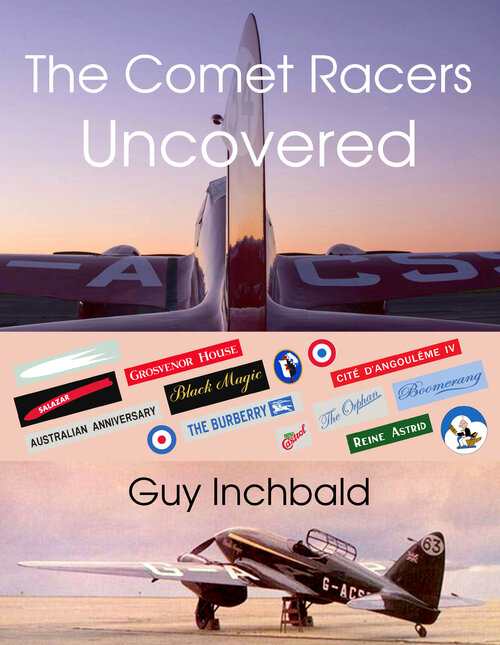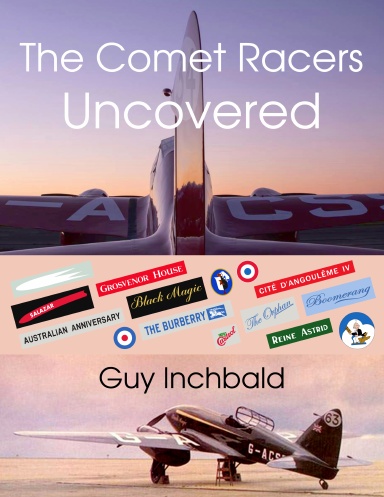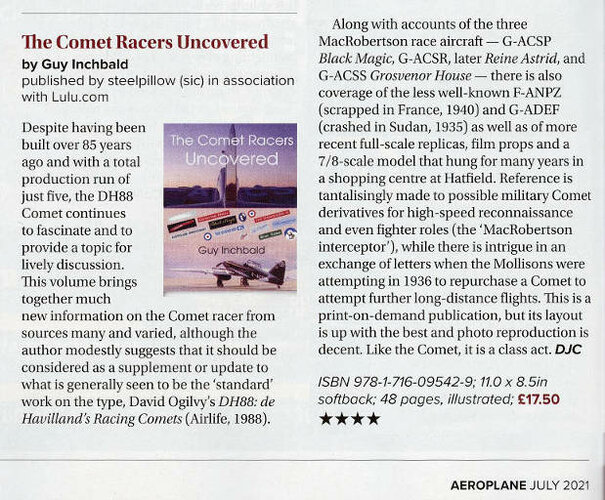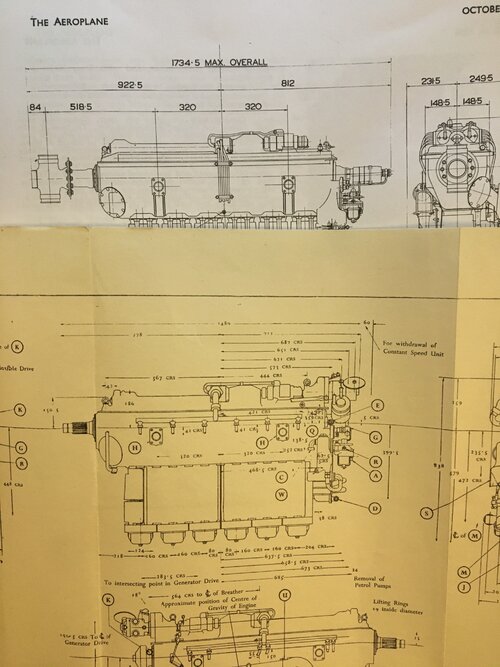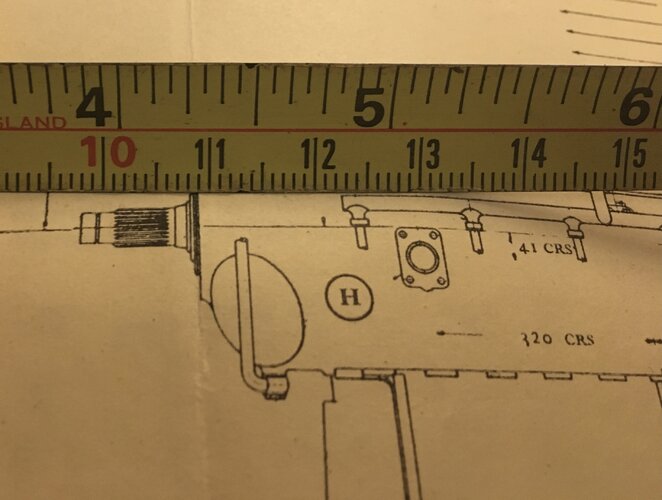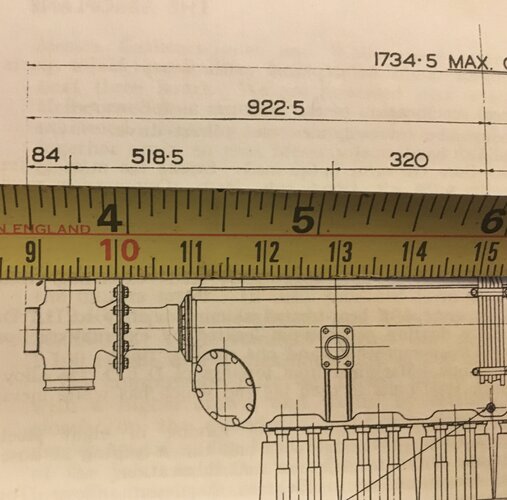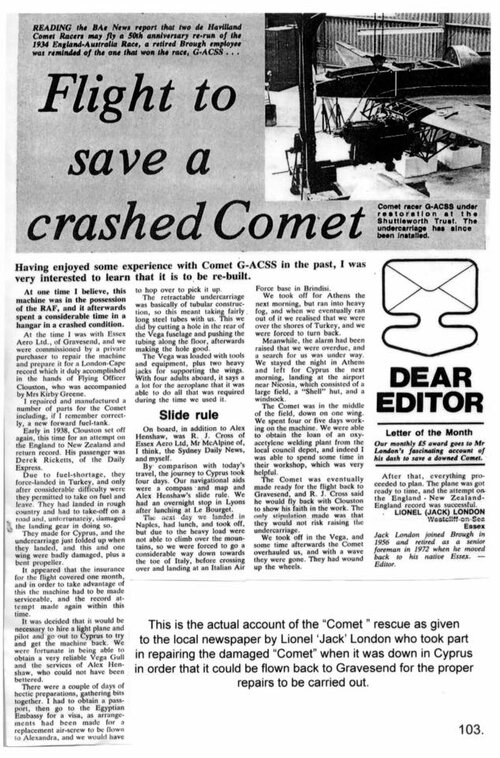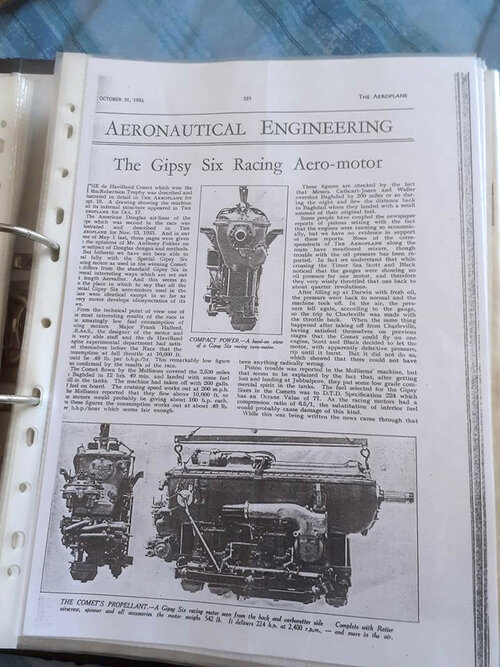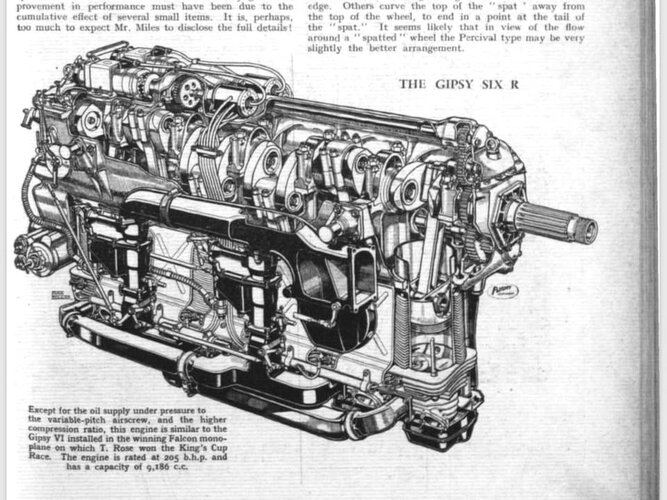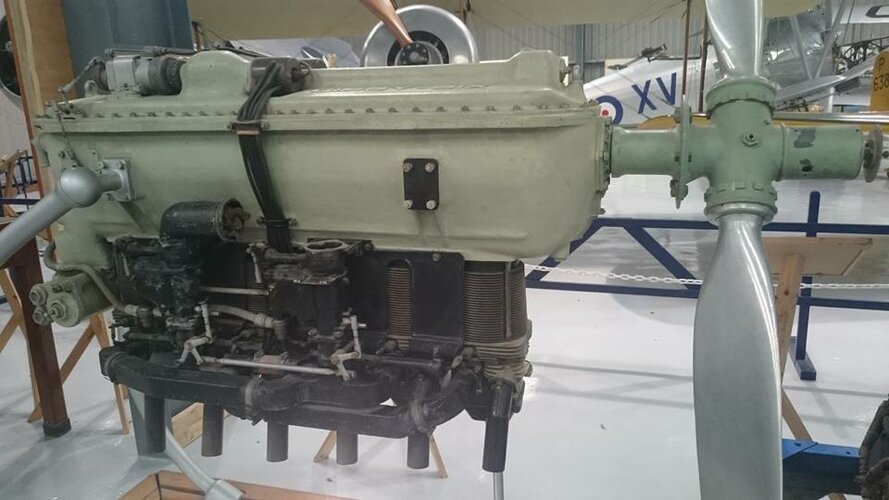Just a brief recap:
Methuselah's post was moved here from
another thread about G-ADOD, a MIles Hawk Speed Six which flew with the Comet's Gipsy Six R engine, and which I mention briefly in the book.
In reply, yes there are errors in the book. Those I am aware of are being collected on
my web page about it. To take those mentioned above:
P.9, engine stats. These depend on many factors and different sources can validly cite different numbers under different conditions. The numbers I give are mostly typical of those cited by reliable sources, and it is a mistake to imagine that, because I give a Max RPM and a rated horsepower, these are therefore obtained under the same test conditions. However sources do differ, with the test conditions usually undefined, so sometimes I had to make a judgement."Wrong" can only apply if the stated test conditions are given, which I avoid doing.
P.10:
Carbs: Agreed, the carbs were not turned. A short right-angle corner piece in the ducting was attached to each one, and it was this that was rotated. I need to add this to my list.
Crankshafts: I have this documented in exhaustive detail. Principal sources are contemporary articles in
Aeroplane and
Flight, and Doug Taylor's biography of Halford. My book is on the Comets, it does not cover the engines in detail. Suffice to say that the criticisms offered are misplaced.
Props: Methuselah is unable to accept that Hamilton's provided ready-made hydraulically-operated variable-pitch props for the Comets, despite them being clearly identifiable in the photos I include on P.13, and Sharp's extensive account of their selection and acquisition in his history of the company. Similarly, he is unable to accept that Halford splined the Six R crankshafts specifically to accept these props.
P.11:
G-ADEF carbs - see P.10 above.
G-ADEF "spline" for the Six I: This is well spotted. The Six I had a tapered fitting not splined. The same mistake appears in the table on P.9. Maybe elsewhere, too. Another one for my list.
Was the Gipsy Six II a clean-sheet design? Conceptually, certainly not; Halford developed it from the original as a baseline, with very specific changes in mind.
P.12:
One of those changes just alluded to was to accept leaded fuels; the Six R required unleaded, the Six II could take either. As
Flight put it, "[it] differs from the Series I engine in that it has been developed to use the higher octane tetra-ethyl leaded fuels." Dickering over the syntactic expression of this point is of no interest to me.
Geared drive on the Six II? I always thought not, then some last-minute discovery made me add it. Darned if I can recall what it was, put that down as a definite maybe for now.
Queen 30. What is the difference between almost new and new? See above note re. dickering.
P.21:
State of Henshaw's Vega Gull. In
Flight of the Mew Gull , pp.105-6 (John Murray Hbk Edn) he describes its purchase and fitting-out, including his "intention to buy a Vega Gull fitted out with long-range tanks". It was registered in his name on 7-1-1938 and subsequently fitted-out. He may well have flown it briefly around the time of registration, but that was not why he bought it and is not the point here.
Which Gardner? Henshaw (p.106) writes that it was Charles. If I am wrong, I m in good company.
Turkey? Another good spot, according to Henshaw it was the Pelopponese. No. 3 for my collection.
P.22:
London's viewpoint is taken from an account he gave in a local newspaper, a copy of which I attach.
The Six R spline? Attached is a photo of it: the spline is distinctly longer in proportion than the later ones. It supports the version of reality to be found in the mainstream publications. Don't trust cutaways? Maybe not, but as a breed these draughtsmen are intensely proud of their technical quality and you cannot just brush them off as artistic license. Attached is another one displaying the same long spline. Then again, I would never measure dimensions off a drawing. But a photo can be trusted rather more. And the example at Old Warden, in the flesh (last image), even more so. Let us defer to the day we can peel back its Ratier adapter and expose the truth.
